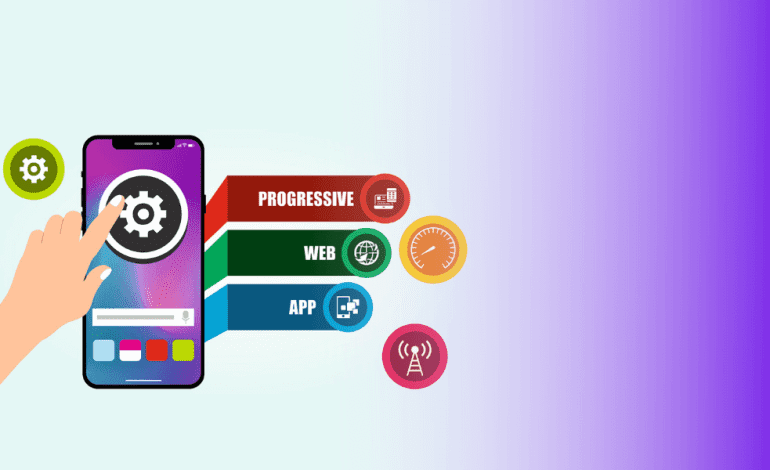Making money is the whole point of creating websites, mobile applications, PWA, and other branded platforms online, right? To maximize their outcomes and, hence, their earnings, your clients have asked you to handle this for them. If money wasn’t an issue, they would utilize a free website building program to upload anything, and you wouldn’t even be considered.
It’s going to be challenging to maintain a business based on building apps if your clients don’t get a significant return on their investment in an app. Below we will share some insights into the different ways you can possibly monetize your PWA and enjoy the work you have put into your websites.
Subscriptions: Just like mobile apps, PWAs can sell premium access. The Financial Times is an online newspaper that sells premium access to its stories through its PWA
Freemium access: Since you’re not apt to find a lot of gaming apps as PWAs, freemium access won’t come in the form of things like in-app upgrades. Instead, you’ll see examples like The Billings Gazette which offer subscriptions for a more streamlined news-reading experience:
Advertising: Ads have been a part of the web’s monetization model for a long time now, so it would be odd for PWAs to ignore this obvious choice. Forbes is one such example that uses a lot of advertising on its PWA
Affiliate marketing is another way to collect ad revenue with PWAs.
eCommerce: Traditional ecommerce sales can take place on PWAs, especially since an SSL certificate is required in order to have one. Debenhams is a nice example of a PWA that sells products online through a PWA to generate revenue.
But that’s not all. Any kind of business can easily convert its website into a PWA and continue selling its products, services, and downloadables. eCommerce monetization is available to everyone.
When you make money with a PWA, it’s yours to keep. That is, aside from any affiliate commissions or e-commerce gateway fees you may owe. But neither of those come close to the 30% take the app stores claim.
Read Also: Make A Living With Your Own Advertising Portal
Additionally, if you’re helping your client make the move from website to PWA (which is much more seamless than website to native app), you can expect a major leap in revenue generation almost right away.
Think with Google interviewed Mobify CEO Igor Faletski to see what sort of monetization trends his company has noticed when it comes to PWAs. Here’s what he said:
Not only can a PWA provide your customers with a richer mobile experience sooner, it can deliver a faster return on investment. And that ROI can potentially offset the cost and risk of the larger digital transformation project.
Our customers typically see a 20% revenue boost with a PWA, so every minute you don’t have a PWA is a minute spent with 20% less revenue on your busiest customer touchpoint. As an example, a retailer with $20 million in annual e-commerce revenue could lose $1.4 million by waiting a month to offer a PWA and another $6.8 million by waiting for six months.
What about mobile apps?
Paid apps are ones that are completely gated off unless a user pays for subscription access. The New York Times does this, though it gives users a handful of articles to read for free to give them a taste of what they’re missing.
Freemium apps are ones that are mostly free, but ask for payment to access certain parts of the app. An example of this is Jackpot Magic Slots, which allows users to create competitive clubs like this one which requires “member” funding.
The catch is that users will inevitably need to purchase coins or spend a lot of time gambling in the app in order to afford those funding fees. So, Jackpot Magic Slots is indirectly making money off of its users.
In-app purchase apps are ones that allow unfettered access to the app. However, they ask for payment from users that want to upgrade their experience with in-app currency, premium features and more. Words with Friends sells Power Ups, Premiums and Coins to customers who want to get more out of their gameplay.
Sponsored content apps are ones that publish sponsored ads and content to generate revenue. Facebook, of course, is a master of this seeing as how it’s nearly impossible for businesses to get in front of users otherwise.
Ad-free apps are ones that accept payment to remove intrusive ads from getting in the way of the app interface.
eCommerce apps are ones that sell goods through their own payment gateways as Fashion Nova does.
Free apps are just what they sound like. However, they aren’t typically available to the public at large. Instead, loyalty users, enterprise customers and others who pay for a premium service in person or online gain access for free.
There’s another way free apps make money and that’s to reward users for referring others to it as is the case with Wordscapes. It might not lead directly to cash in the bank for the app, but it does increase the amount of word-of-mouth referrals which tend to be more valuable in the long run anyway.
Mobile app stores take a portion of the money earned through your app. More specifically, app stores take 30% of your earnings. This becomes obvious when you compare app store revenues.
Note that the app store revenues are about a third of total mobile app revenues. So, your earnings with a mobile app are more like 70% of your projected total earnings.
Another monetization “cost” you have to think about is the fact that app stores don’t pay you out right away.
According to Apple:
Payments are made within 45 days of the last day of the month in which book purchases were made. To receive payment, you must have provided all required banking and tax information and documentation, as well as meeting the minimum payment threshold.
Not only that, but you have to meet a certain minimum threshold. If your app doesn’t generate over a certain limit based on which country you operate out of, you might have to wait longer.
According to Google:
In many cases, Google will initiate a payment on the 15th day of each month or on the next business day, if your bank account has been verified and you’ve reached a minimum balance, which varies by region.
Google’s minimum threshold is much higher than Apple’s, so you could end up waiting even longer to get paid your app earnings.
In sum, not only are you paying the app stores a membership fee and letting them take a good chunk of your earnings, but you’re paying with your time as well.


